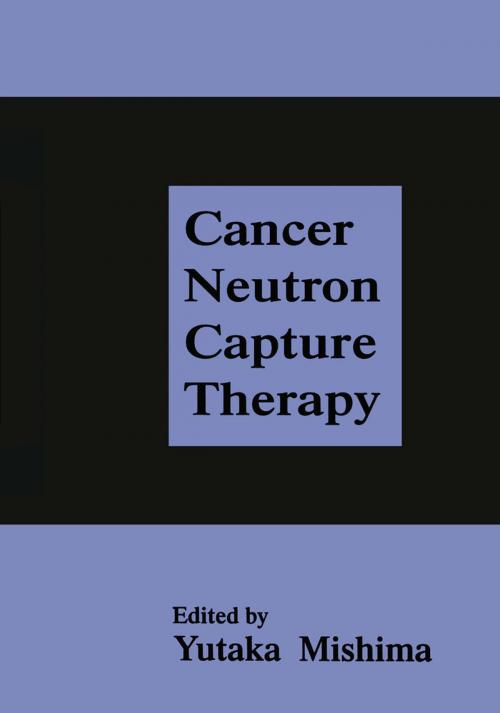Cancer Neutron Capture Therapy
Nonfiction, Health & Well Being, Medical, Specialties, Dermatology, Oncology| Author: | ISBN: | 9781475795677 | |
| Publisher: | Springer US | Publication: | June 29, 2013 |
| Imprint: | Springer | Language: | English |
| Author: | |
| ISBN: | 9781475795677 |
| Publisher: | Springer US |
| Publication: | June 29, 2013 |
| Imprint: | Springer |
| Language: | English |
There are many human cancers which actively synthesize specific characteristic proteins such as melanomas, thyroid cancer and squamous cell carcinoma. Many cancer researchers have of course tried to utilize this specific activity as a key for the selective treatment of cancers. In the past for example, the molecular hybrid compound of DOPA, a substrate of melanin, and nitrogen mustard N-oxide hydrochloride, a ctyotoxic anti-tumor drug, was synthesized as Melphalan and used to treat malignant melanoma. A major problem arose though in that it was soon found to be highly suppressive toward bone marrow and quite toxic while not being remarkably effective. Thus, malignant melanoma could not be cured by it. Such failure led us to develop a novel bimodal therapeutic system which includes the use of non-toxic potentially cytocidal chemicals which selectively accumulate within the cancer cells and which are converted by a controllable modality into an actively cytocidal element in situ. We can now non-surgically cure malignant melanoma and glioblastoma with our selective cancer treatment, neutron capture therapy (NCT); as can be found in this volume. Included are 124 papers on the latest breaking developments discussed at the Sixth International Symposium on NCT for Cancer held in Kobe during the late autumn of 1994.
There are many human cancers which actively synthesize specific characteristic proteins such as melanomas, thyroid cancer and squamous cell carcinoma. Many cancer researchers have of course tried to utilize this specific activity as a key for the selective treatment of cancers. In the past for example, the molecular hybrid compound of DOPA, a substrate of melanin, and nitrogen mustard N-oxide hydrochloride, a ctyotoxic anti-tumor drug, was synthesized as Melphalan and used to treat malignant melanoma. A major problem arose though in that it was soon found to be highly suppressive toward bone marrow and quite toxic while not being remarkably effective. Thus, malignant melanoma could not be cured by it. Such failure led us to develop a novel bimodal therapeutic system which includes the use of non-toxic potentially cytocidal chemicals which selectively accumulate within the cancer cells and which are converted by a controllable modality into an actively cytocidal element in situ. We can now non-surgically cure malignant melanoma and glioblastoma with our selective cancer treatment, neutron capture therapy (NCT); as can be found in this volume. Included are 124 papers on the latest breaking developments discussed at the Sixth International Symposium on NCT for Cancer held in Kobe during the late autumn of 1994.















